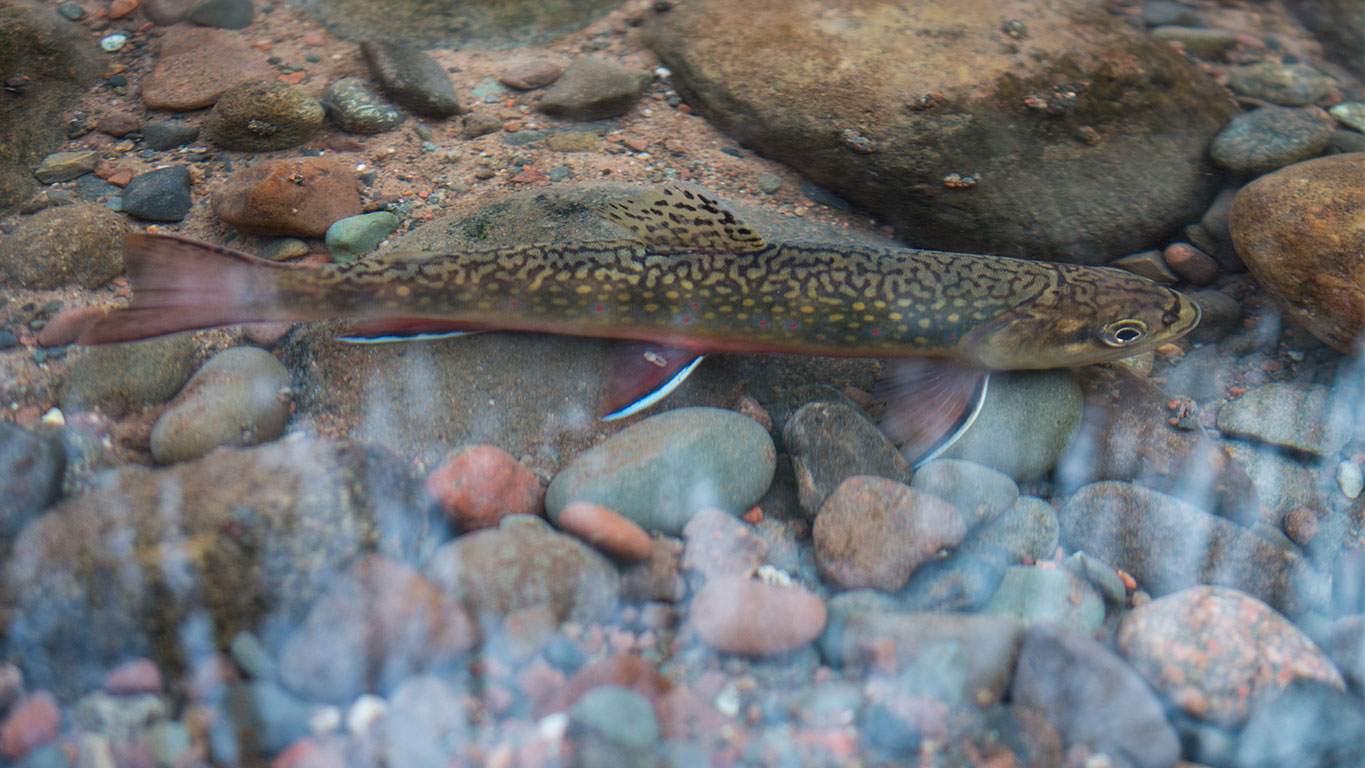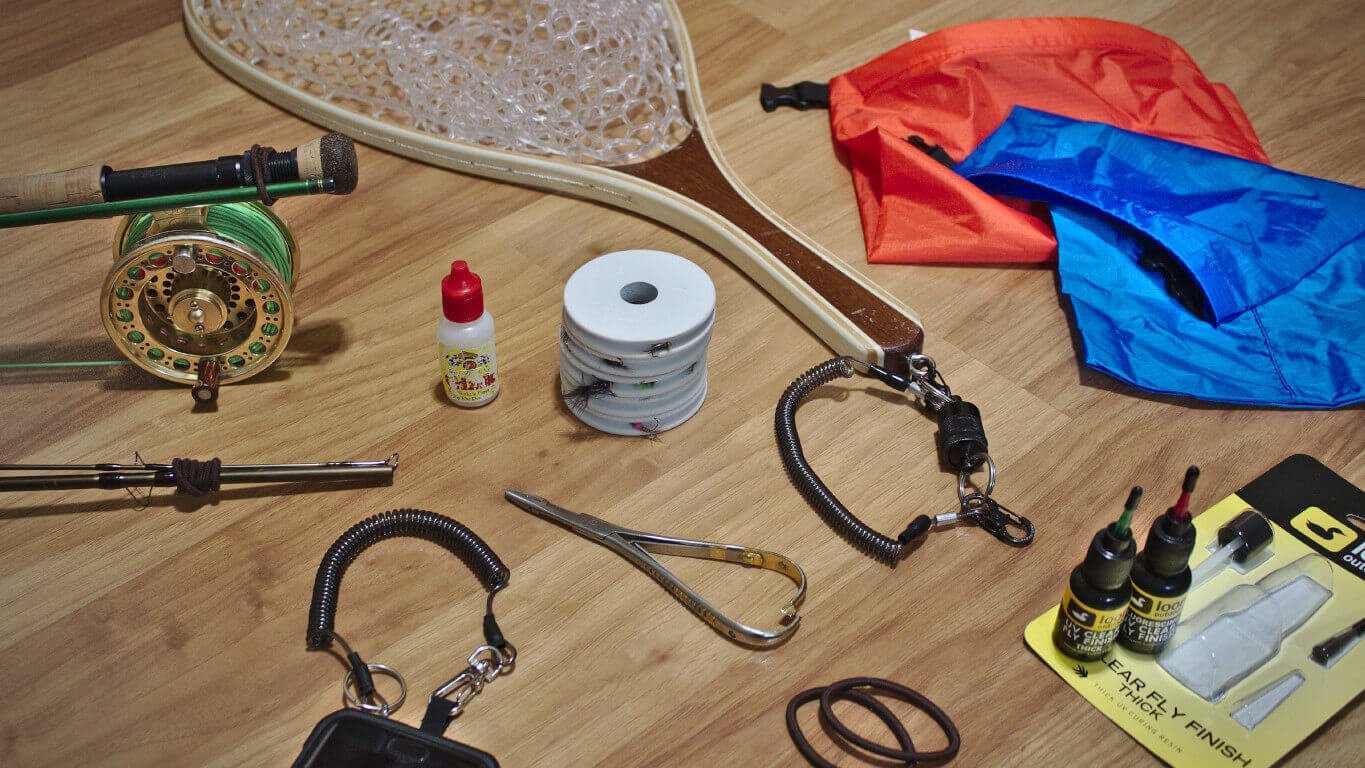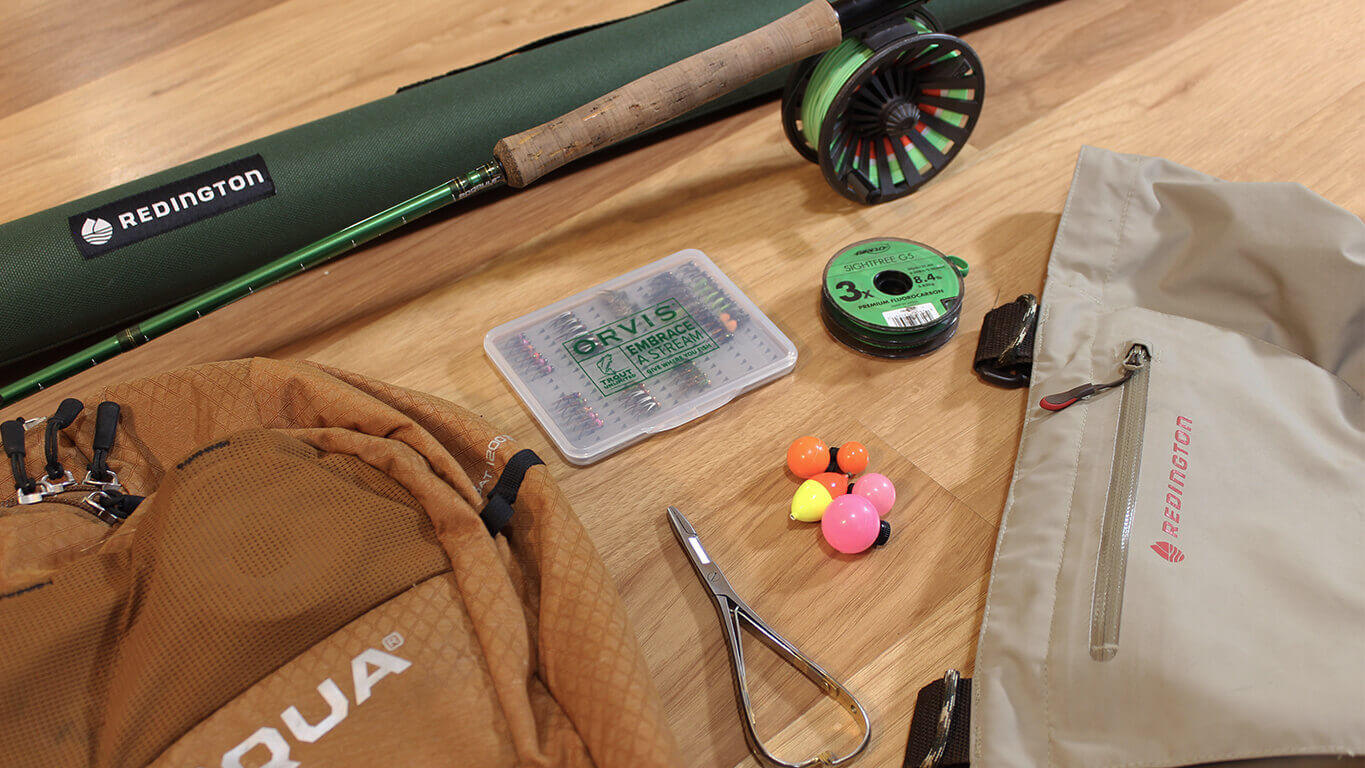Fishing on Lake Superior's North Shore for Trout and Salmon
The ultimate guide fishing Lake Superior’s North Shore for steelhead, Kamloops rainbow trout, coho salmon, lake trout, and more!
If you are like me, you love catching trout and salmon, but waiting through the long winter months for the rivers to break free has you going stir-crazy. It may be time for you to try out a new type of fishing: shore fishing on the north shore of Lake Superior! There are great opportunities to catch trout and salmon on the shore starting in the fall and continuing into the spring steelhead run.
This article is mainly targeted toward the beginner fisherman but has some great tips any shore angler can use. By the end of this article you will have way more knowledge about shore fishing then I had starting out, including a good idea of what species you can expect to catch, when and where to target them, and all the equipment, flies, and tackle you will need to have a great day on the shore.
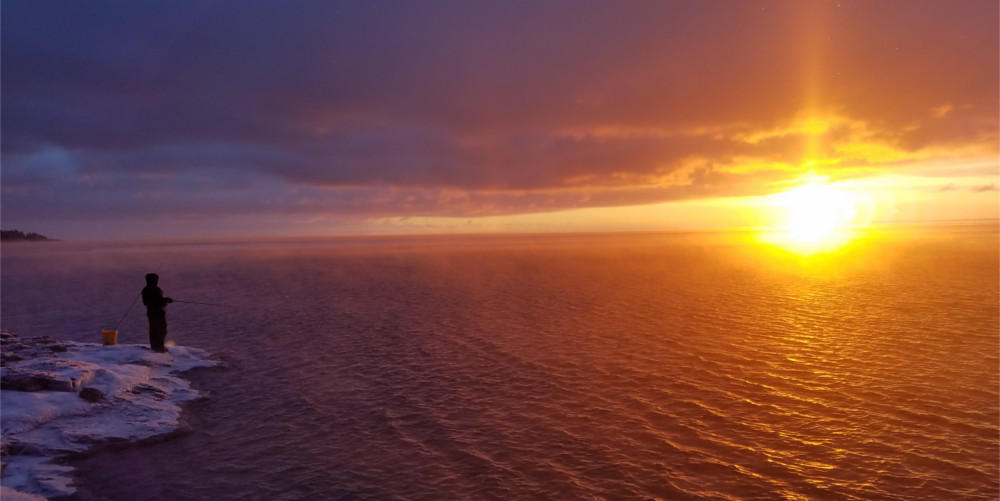
A few years ago, my friend Ben sent me a text saying we should try shore fishing on Lake Superior. At first, I was skeptical that we would catch any fish from shore on the world’s largest freshwater lake, but I was willing to entertain the idea. Ben came up the next morning and we tried fishing for whatever we could catch. Just as the sun started to rise, Ben hooked a fish. Every few seconds we could see it jumping out of the water in the first rays of sunlight coming across the lake. At that point, I knew I was hooked.
The single best advice I can give you is to get out and put your time in. Try different methods and talk to other local fishermen. There is not a single way to catch these fish. The best way to catch these fish can depend on the water temperature, water clarity, wind, time of day. So be prepared to change tactics or locations to capitalize on the best bites.
Species of Fish in Lake Superior
There are many species of fish in Lake Superior that you can catch from shore. The most popular fish targeted by shore fishermen are Kamloops rainbow trout (also called “loopers”), steelhead, and Coho salmon. There are also good opportunities to catch steelhead, lake trout, pink salmon, lake whitefish and coaster brook trout!
Know the Regulations
This article would be way too long and boring to read if I included all the regulations you need to know about trout and salmon fishing, so I will just list a few that you absolutely need to know before hitting the shore.
- You will need a trout stamp - MNDNR Licenses
- You should know the difference between
a Kamloops rainbow trout (with a clipped adipose fin) that you can keep and
a wild steelhead (with an intact adipose fin) that you must release. - If you are going to keep fish, know the current fishing regulations for size and quantity. Below are the current limits for 2018, you must check the current fishing regulations for updated limits.
- Kamloops Rainbow trout - 3 with a minimum size limit of 16". Total allowed number of brook trout, splake, brown trout and rainbow trout is 5.
- Lake Trout - 3 (season typically ends in October)
- Salmon (Chinook, Coho, Pink, Atlantic) - 5 combined (only one can be Atlantic salmon). Minimum size 10".

Steelhead vs Kamloops
If you want to learn more about the difference between Kamloops rainbow trout and “wild” steelhead as well as some of the history, you should read this great article by local fisherman Leif Birnbaum - The Stocked Rainbow Trout In Minnesota Waters Of Lake Superior
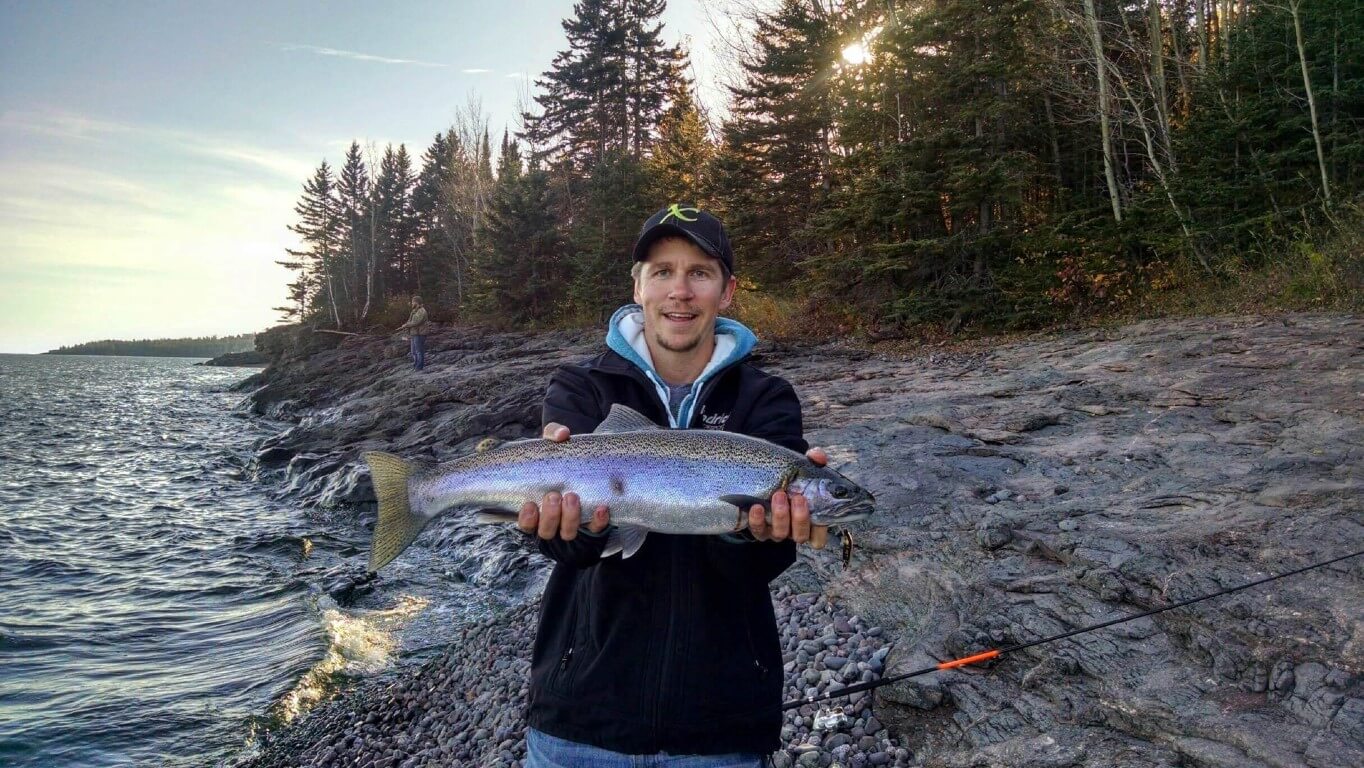
Interbreeding Between Steelhead and Kamloops rainbow trout.
The MN DNR has been conducting a study on the hybridization between steelhead and Kamloops rainbow trout for years trying to determine if these two species of rainbow trout are interbreeding. It has recently been found to be true and because the offspring of these hybrid fish are found not to survive as well as the pure steelhead strain of rainbow trout, the French River Hatchery that has been stocking Kamloops into Lake Superior will be closing. If you would like to learn more, there are many great articles about the Steelhead Genetics Project, the Interbreeding of steelhead and Kamloops, as well as the MNDNR Rainbow Trout Genetics and Future Management Plan (pdf).
MNDNR Stocking
[2018 Update]
During the March 2018 Gitche Gumee Trout Unlimited meeting we had speakers talk from the MN DNR and WI DNR talk about fisheries management issues. One of the speakers was Nick Peterson, a Fisheries Specialist with the MN DNR and coordinator of the Steelhead genetics project. He explained that because of the hybridization of Kamloops rainbow trout and steelhead it would be “irresponsible to continue the Kamloops project”.
The DNR had proposed 4 possibilities (listed below) for stocking and asked 10 local organizations for their input.
- No Change in Management (continue stocking Kamloops)
- Wait-and-See (cease stocking Kamloops and evaluate natural reproduction and recruitment of steelhead)
- Limited Wild Steelhead Harvest (cease stocking Kamloops, but continue steelhead fry stocking, open a limited harvest of wild steelhead)
- Alternative Hatchery Product for Harvest (cease stocking Kamloops and steelhead fry, but stock genetically-screened, adipose-clipped pre-smolt steelhead stocked for harvest)
[2020 Update]
The MNDNR has chosen with the imput of anglers and local conservation groups to proceed with an alternative hatchery product for harvest, which means the DNR will cease stocking Kamloops and replacing them with a new broodstock of genetically-screened adiposed-clipped pre-smolt steelhead at the Crystal Springs hatchery. They would be stocking 100,00 pre-smolt steelhead in the Lester and French Rivers beginning in April of 2018. These fish would be clipped in the same fashion as Kamloops are currently clipped (adipose fin clip) in order to reduce confusion on harvesting.
There are still many Loopers being caught on the shores of Lake Superior. During the Spring of 2021 anglers should expect to start seeing the recently stocked (adipose-clipped) rainbow trout in the rivers during the spring run along with a few remaining loopers. Other than their size (Remaining loopers will be much bigger) it can be difficult determining if a clipped rainbow is actually a stocked looper or a stocked steelhead. Although these new steelhead will still be a “stocked” fish. They are still genetically pure and should potentially be able to spawn with the natural steelhead without a reduced level of gamete production that was being hindered by the hybridization of the genetically-different Kamloop strain of rainbow trout.
Because the new stocked steelhead will be able to help the reproduction of future steelhead it is a great idea to practice catch-and-release with future adipose-clipped rainbow trout (even if you are able to legally harvest them) in order to help the overall population growth of a fish that we all hopefully want to see for years to come.
Equipment
Alright, now that we are done with all of that we can get into the really fun stuff. And by fun stuff, I mean buying some fishing gear!
You can use nearly any type of fishing rod. However, if you want to increase your chances of catching and landing a fish, then it is a good idea to buy a dedicated shore rod. Having a long rod (10-12ft) will allow you to cast further and get better hooksets. It is also important to have a rod with large guides that won’t freeze up in the winter.
Buying your first shore rod
Just like bass fishing, there are different types of rods that work better for different techniques. Heavy, fast action rods that will allow you to use jigs to punch through and pull fish out of thick cover. Shorter, moderate action rods that will allow you to walk a topwater and keep a fish pinned on lures with treble hooks. There are also different techniques of shore fishing that ideally take a different rod, although there are jack-of-all-trade rods that will do all of them fairly well.
If I had one shore rod that I could use for any type of fishing it would be a medium power, moderate fast action, 10 to 12-foot rod.
Another option shore rods have it grip design. This isn’t a huge factor, but typically if you spend more time casting it is better to have a rod with a longer rear grip and short foregrip. If you spend more time bobber fishing you will want a rod with a longer foregrip. This will allow you to balance the rod horizontally so you are able to make a quick hookset when your bobber goes down.
The Tica HLHB is a great option for shore fishing for trout on Lake Superior. It is a 12’ medium auction, moderate-fast action rod that can be used for a variety of different applications, but it is most often rigged with a casting bobber and a looper bug or fly.
If you are looking in the custom market there is no better rod builder in the Duluth area that Dam Goods and Gear. They make custom ice, fly-fishing, walleye, and steelhead rods.
Reels
You’ll also want to pair your shore rod with a reel that has a large arbor, large line capacity, and a smooth drag. You can get away with any 200 size spinning reel, but the larger 300 to 400 sizes are ideal. These larger reels often have a better drag and hold more line. Typically larger reels are cheaper and have a better drag, so you can typically find inexpensive reels that are very high in quality for as low as $30. Like the Shimano Sienna. I am currently using a Daiwa Exceler 3500H and it has never let me down.
Line, Flies, Bugs, and Other Tackle
Line
The majority of shore fisherman use 4-8 lb monofilament. Monofilament is cheap, it floats (which is ideal for bobber fishing), and has enough stretch to soften some of the violent head shakes and rolls of the bigger fish you will be catching. My personal favorite is Maxima Ultragreen. Tying on a swivel and fluorocarbon leader can also be a good idea especially when the water is extremely clear.
Bobber Fishing
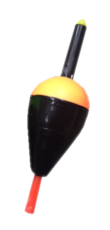
Bobber fishing is one of the most common ways to catch salmon and steelhead from shore. Heavily weighted bobbers allow you to launch your fly out to where the fish are feeding. These bobbers come in 3-4 different sizes. You may have to buy a couple of different sizes to see what ones match up the best with your rod. Rigging for bobber fishing is fairly simple, just peg your casting bobber onto your line two to four feet from the end of your line and tie on a fly or looper bug. Just like trout fishing on a river, you need to be quick with your hooksets. Since these bobbers are bigger than a typical strike indicator they don’t always drop completely below the water. If you notice any odd wobbles or erratic movement of your bobber, set the hook!
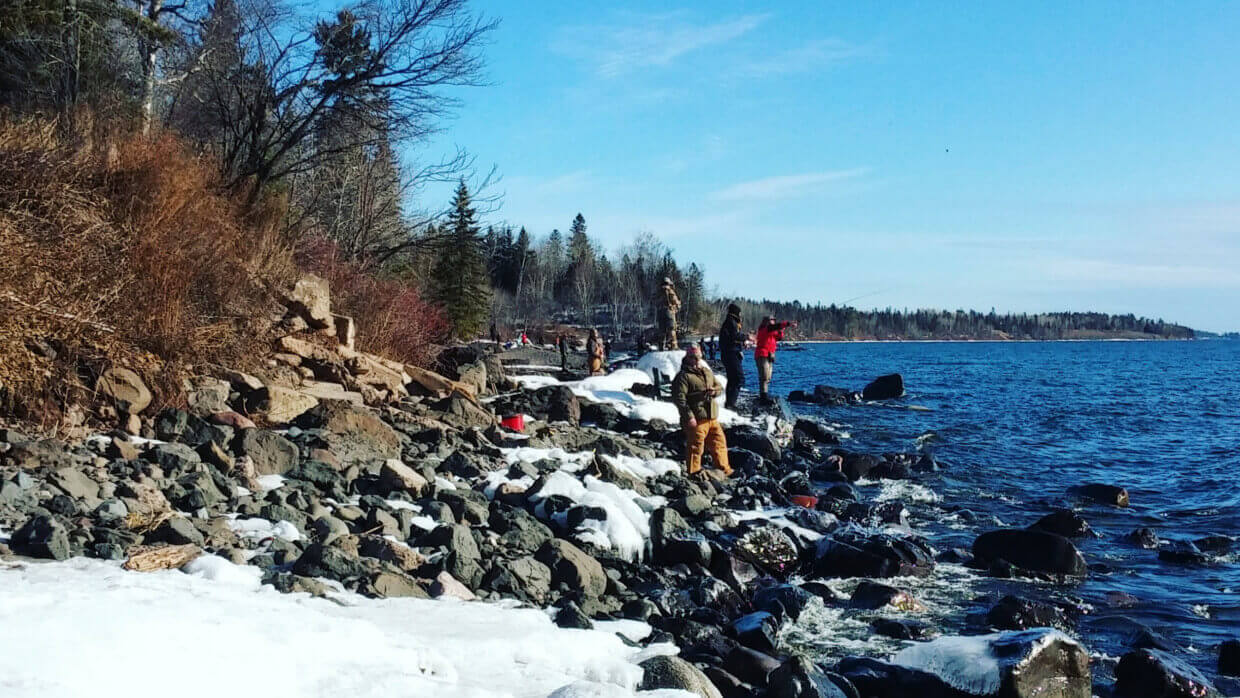
Rigging for bobber fishing is fairly simple, just peg your casting bobber onto your line and tie on a fly or looper bug two to four feet below. I typically use either an improved clinch knot, or a no-slip mono loop knot, but you can always find your favorite knot in my What Knot to Know guide.
Looper Bugs

Looper Bugs are a great fly to use when fishing for Coho Salmon and Kamloops (looper) rainbow trout and steelhead on the North Shore of Lake Superior. You can buy them in many of the local shops, but are also very easy to tie. All you only need is a jig hook and a couple of different materials including marabou, flashabou, dubbing, and rubber legs. If you can tie a wooly bugger, you can tie a looper bug. They can be bought or tied in a variety of sizes and color combinations. I prefer darker colors including black, brown, and purple (especially in muddy or wavy water). Midwinter and muddy water conditions are the best times to bobber fish with looper bugs.
If you don’t tie your own flies don’t worry these bugs can be found in most of the local shops in Duluth including Fisherman’s Corner, and Marine General
Loopers and steelhead will often take a plain looper bug, but if you are trying to catch a Coho it is best to tip your fly with some meat (like a waxworm or butterworm).
Fly Tying Tutorial
Recipe:
- Thread: 140 denier Uni-thread (black)
- Hook: Jig hook (Northland RZ 1/16 oz black)
- Tail: Blood Quill Marabou (brown and black)
- Flash: Crystal Flash (rainbow and green)
- Body: Rabbit Dubbing (brown) / Ice Dub (peacock)
- Legs: Barred Round Rubber Legs (brown and black)
Traditional Flies
If you fly fish or tie your own flies you can use your standard trout flies to fish from shore as well. Stoneflies and nymphs, including the prince nymph and pheasant tail nymph, are go-to flies in almost any body of water, including Lake Superior. These flies tied anywhere from size 6 to 16 can produce fish. As the spring starts warming the water, or if the water is fairly clear you will want to tie on a fly instead of a looper bug.

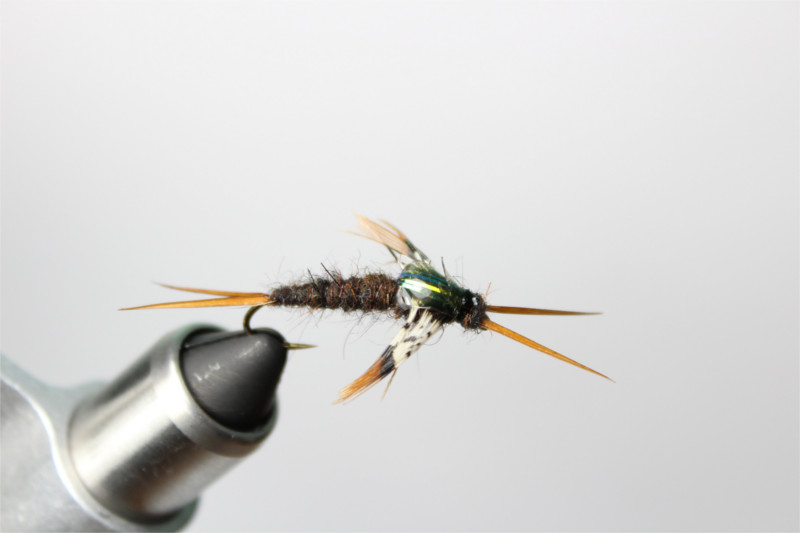
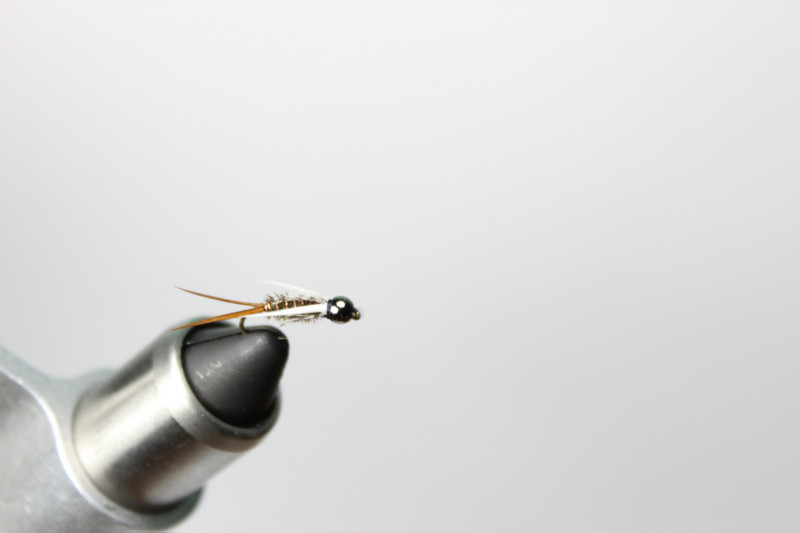
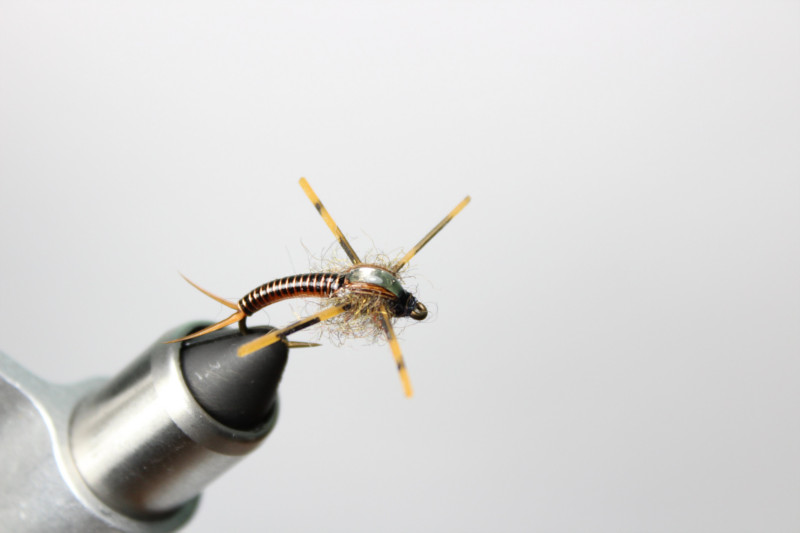
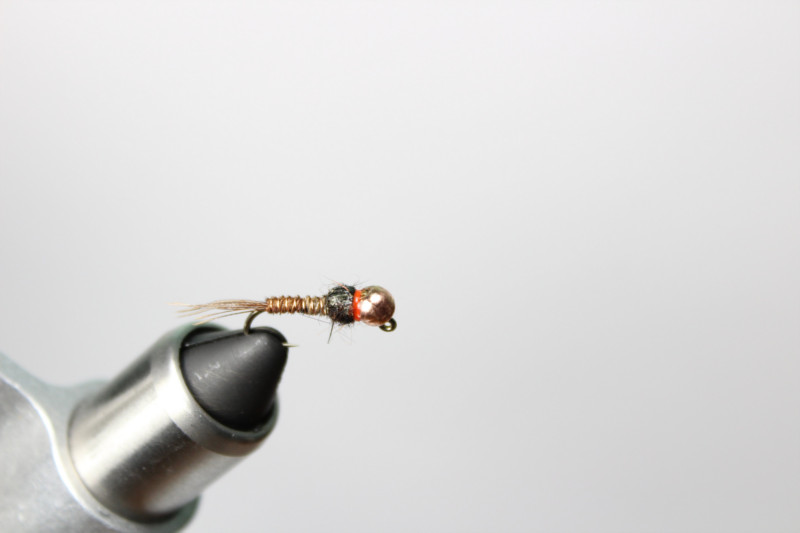
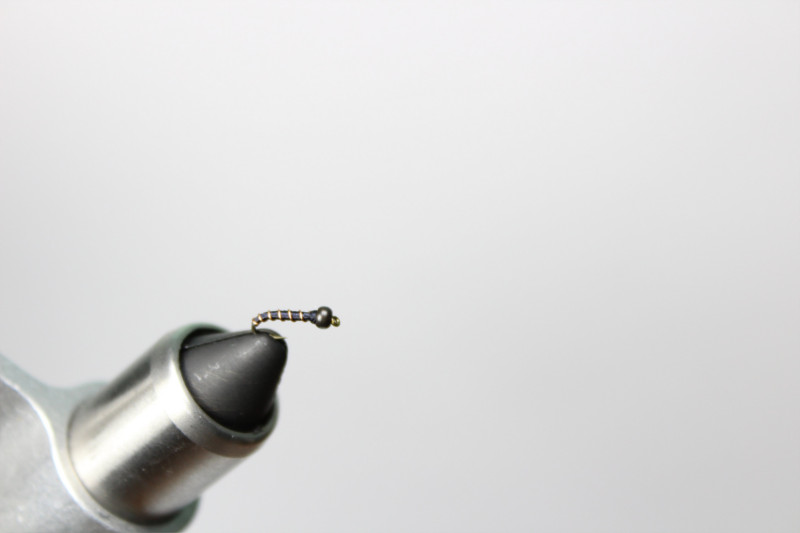
Casting Spoons
The first fish I caught from shore was with a casting spoon. I love catching fish with spoons because you are able to feel the fish hit. Once you cast, count down a couple of seconds, then start to reel with a fairly quick and constant retrieve (one to two revolutions per second)
Popular Casting Spoons:
Start with a few 1/4 to 3/4 ounce spoons in orange/gold or blue/silver. Spoons can be a great way to catch fish in the fall, winter, or spring. From my experience, you are most likely to catch lake trout and steelhead in the fall, Coho in the winter, and loopers in the spring.
Bottom Rigging
Slinky Rig
When bottom rigging, you can use a standard sinker or you can try the popular slinky rig (a sinker built out of parachute cord and split-shot). You can either buy them from local fishing stores like Marine General or you can make your own slinky rigs. Minnesota Steelheader has great instructions on building a slinky rig.
Rigging
To get this system rigged up you’ll first want to slip your main line through the swivel of the slinky rig. Then tie on another larger swivel. Finally, tie on a two to four foot section of leader and your preferred hook. Slipping your line through the first swivel will allow a fish to run without it feeling the weight of the sinker or slinky rig. Most anglers will fish this setup with spawn bags, but you can also catch fish with a simple worm. If you fish with a worm, you will either need a worm blower to make the worm float or you will need to add a small float to your leader. After you make your cast, place your rod in a rod holder (which can easily be built by duct taping PVC pipe to a metal rod). After your weight sinks to the bottom, slowly reel in the slack until your rod begins to bend. Late winter and spring are typically the best times to fish with bottom rigs.
Spawn

You can buy spawn, but if you catch and keep a female looper you can, and should cure the eggs and make your own spawn sacks. There are many ways to cure eggs, Here is a video from the Consummate Sportsman on how to use borax to cure eggs as well as a video from Pautzke Bait on how to tie spawn sacks. If you do catch a hen (female) looper and aren’t planning on using the eggs, see if any other fisherman could use them.
Worms
You can fish with worms just like you would fish with spawn. Although, You will need to get the worm to float to get it off the bottom. You can do this by either buying a worm blower and adding air into the worm, or you can add a small float just below your hook.
When rigging your bottom rigs remember that catching bigger fish doesn't correlate with having a bigger hook. Trout are notoriously picky and having a giant hook can and will deter fish, so using small hooks (size 2-8) with spawn sacks, or worms can increase your catch rate significantly.
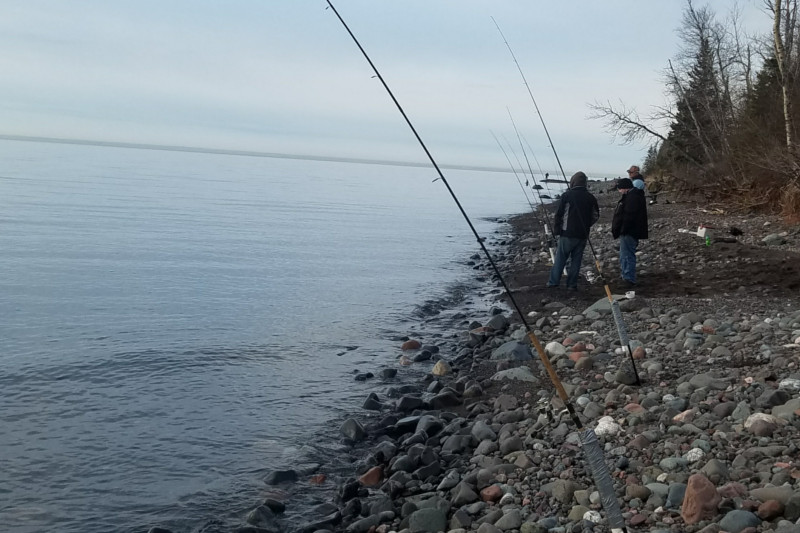
Miscellaneous Equipment
Here is a list of other items that may be helpful when fishing the north shore.
- Headlamp
- Warm Clothes (some of the best fishing occurs on cold winter mornings.)
- Rod Holders (for bottom rigging)
- Ice Cleats
- Waterproof boots
- Sunglasses
- Long-Handled Net
- Pliers - Buy a pair of Scissor Mitten Clamps, you won't regret it.
Where to Fish
If you can make it down to a public section of shoreline, throw a line in! There are opportunities to fish all the way from Canal Park all the way up the shore into Canada. Some of the best areas to fish are near river mouths and from break walls. Just make sure you get to the lake early in the day or stay late. Most of the action happens with during dawn and dusk.
When to Go
Keep an eye on the weather, the big lake can go from crystal clear and dead calm to muddy and crashing waves within a few hours. If the wind has blown hard the waves can make it difficult to drift a bobber or bottom rig. Dead calm days can make for unnatural presentations when bobber fishing. In the dead of winter, a lack of wind can cause the shore to freeze over making fishing from shore a frustrating task.
Fall
From my own personal experience, I have found that the fall is one a great time to catch rainbow trout and lake trout. The fish seem to be more active and eager to chase. This is the time of year when I am most often throwing spoons.

Early fall is also a great time to catch pink salmon. I recently wrote an article on how to catch pink salmon during their fall run.
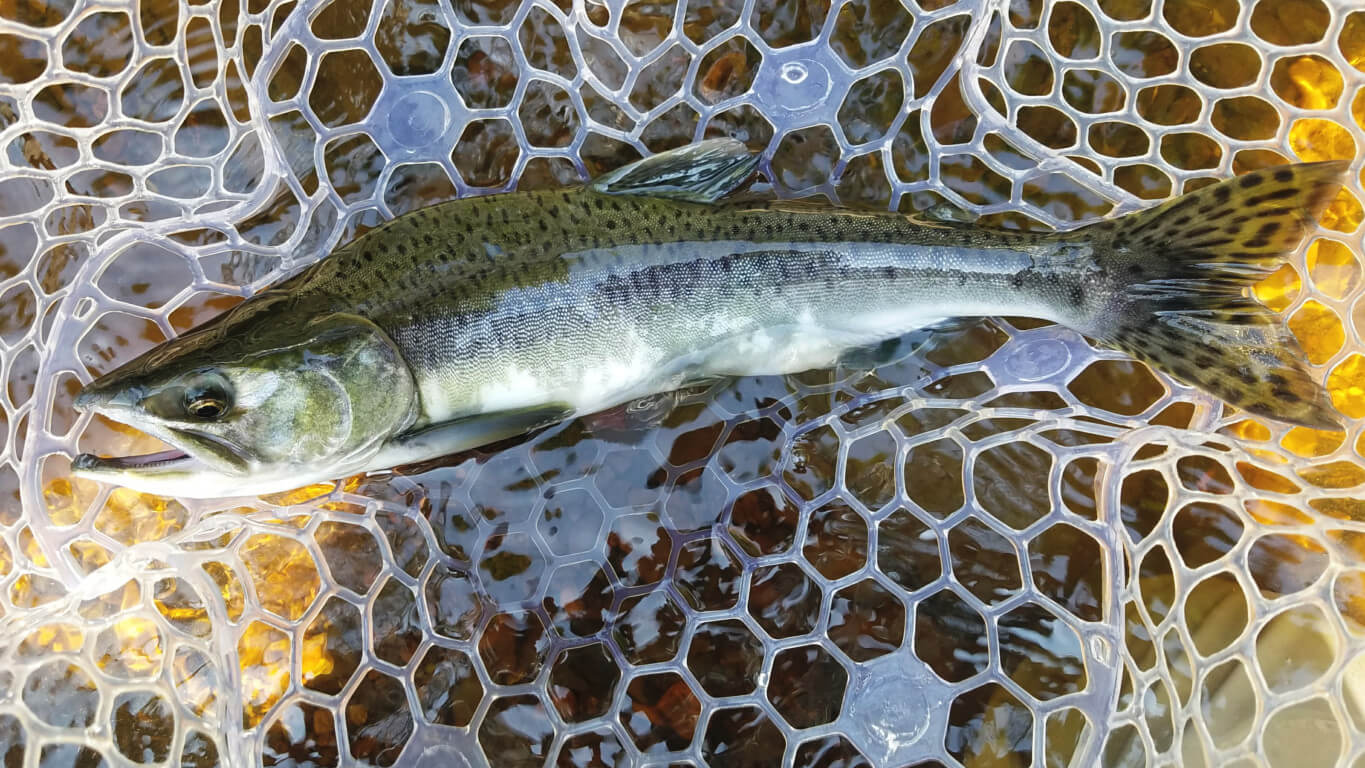
Winter
Once winter hits you can still catch fish on spoons, but casting bobbers with looper bugs will usually produce the most fish. If the water is muddy or the waves are high I tie on a large black or purple looper bug. If the water is clear and calm I will downsize to a Superior X-legs or a similar stonefly. Loopers and Coho are the biggest targets in the middle of winter.
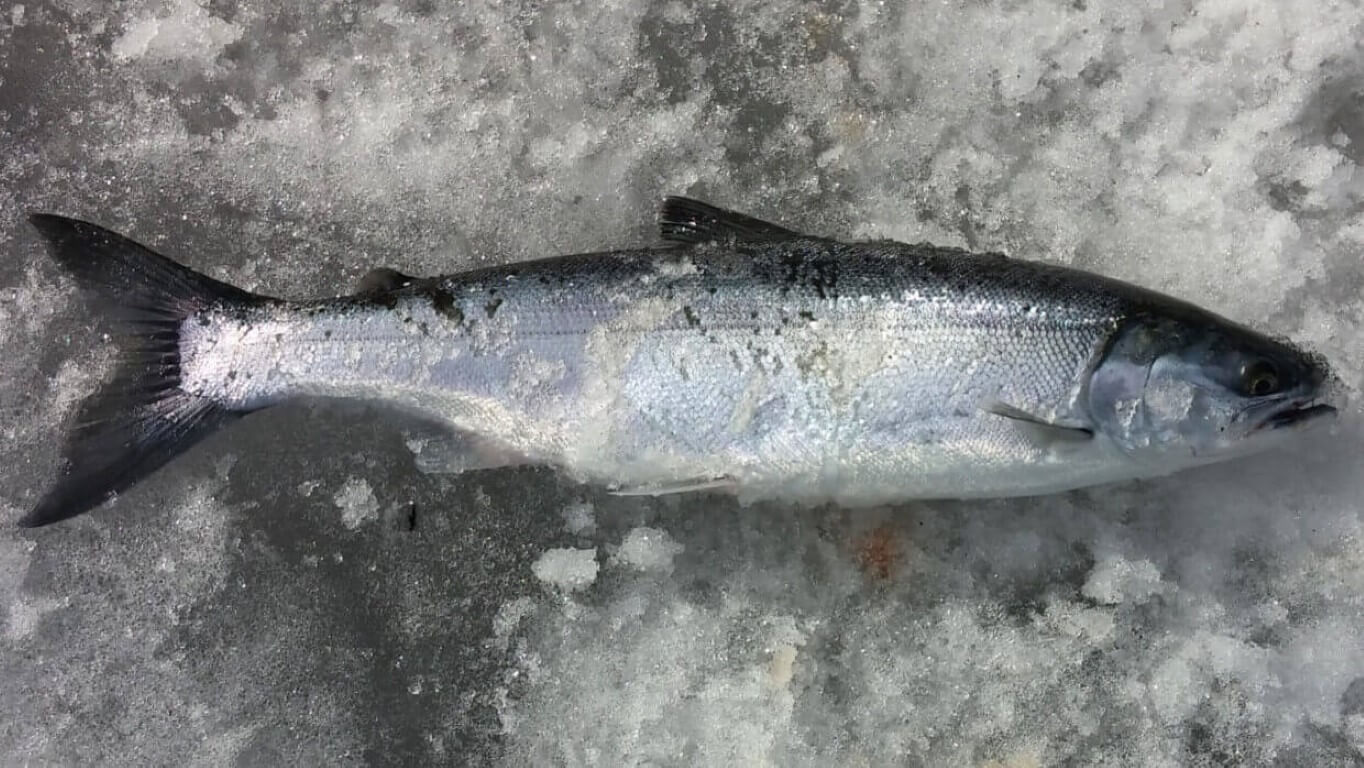
Through the Ice
There is a possibility that Lake Superior will freeze in the winter. If it does, catching lake trout and coho through the ice can be some of the most exciting fishing you will ever do. If you want to learn how to catch lake trout through the ice or you can watch a video of ice fishing for lake trout.
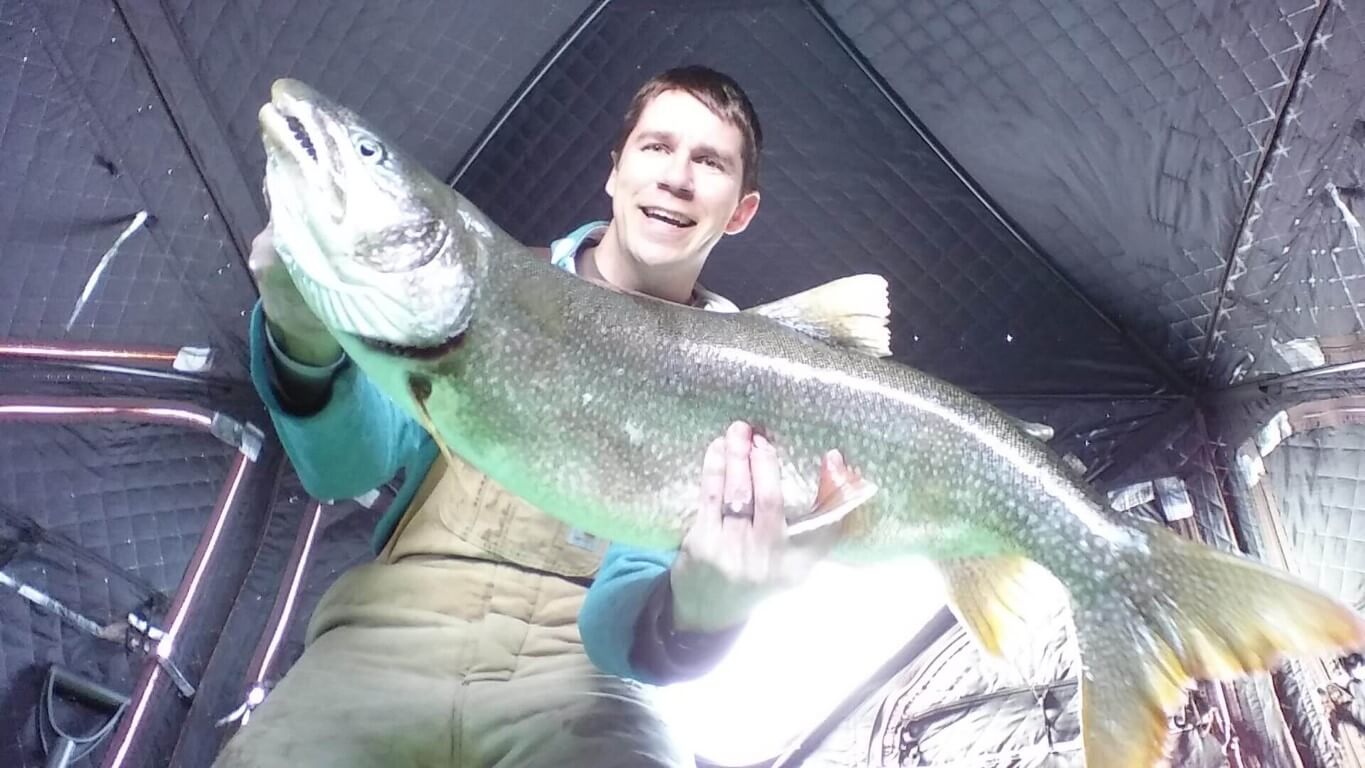
Spring
Once the rivers start to melt, trout begin staging at river mouths waiting to spawn. This can be a fantastic time to fish and they can be caught using almost any method listed above. With spawn and smaller flies tied under casting bobbers being the most popular. Once the rivers open up the best fishing follow the fish up the rivers.
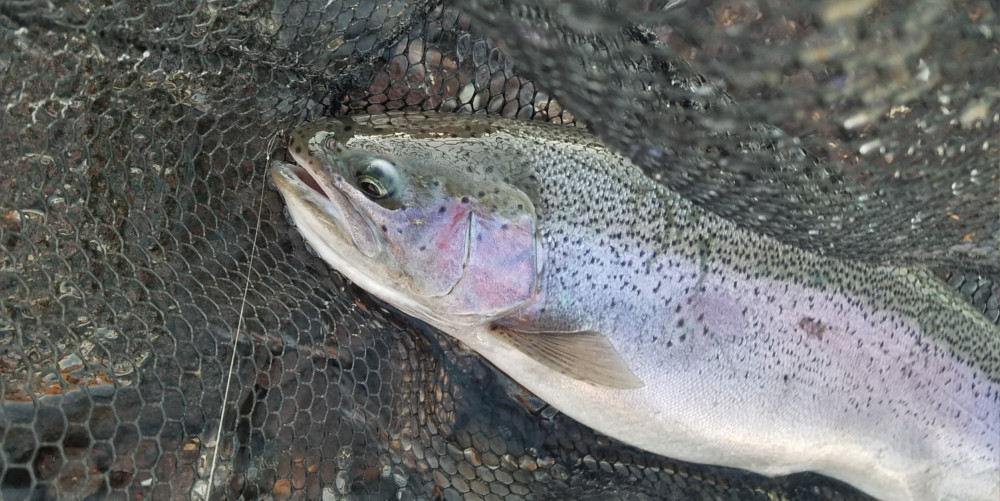
Local Trout Organizations
- Gitche Gumee Trout Unlimited - mntu.org/gitche-gumee - Subscribe To The Newsletter - Follow Them
- Minnesota Steelheader - minnesotasteelheader.com - Become a Member - Follow Them
Share with a friend!
js-outdoors is a free resource for all.
Please consinder donating to keep this site ad-free!


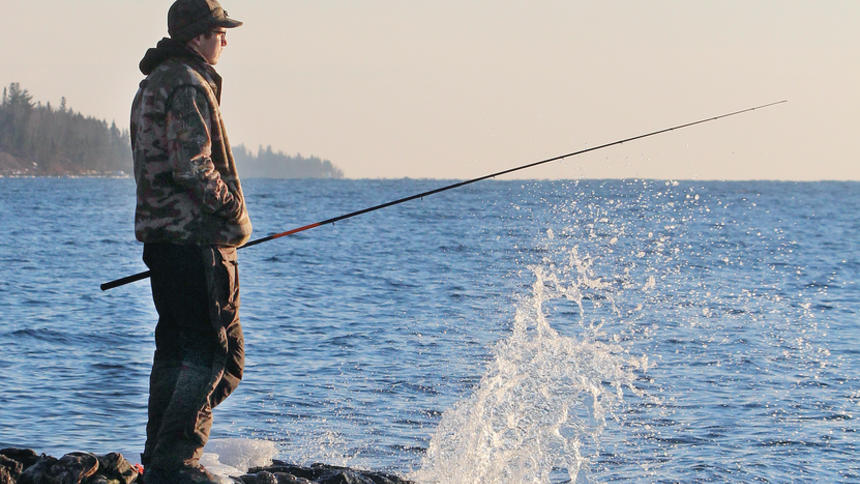
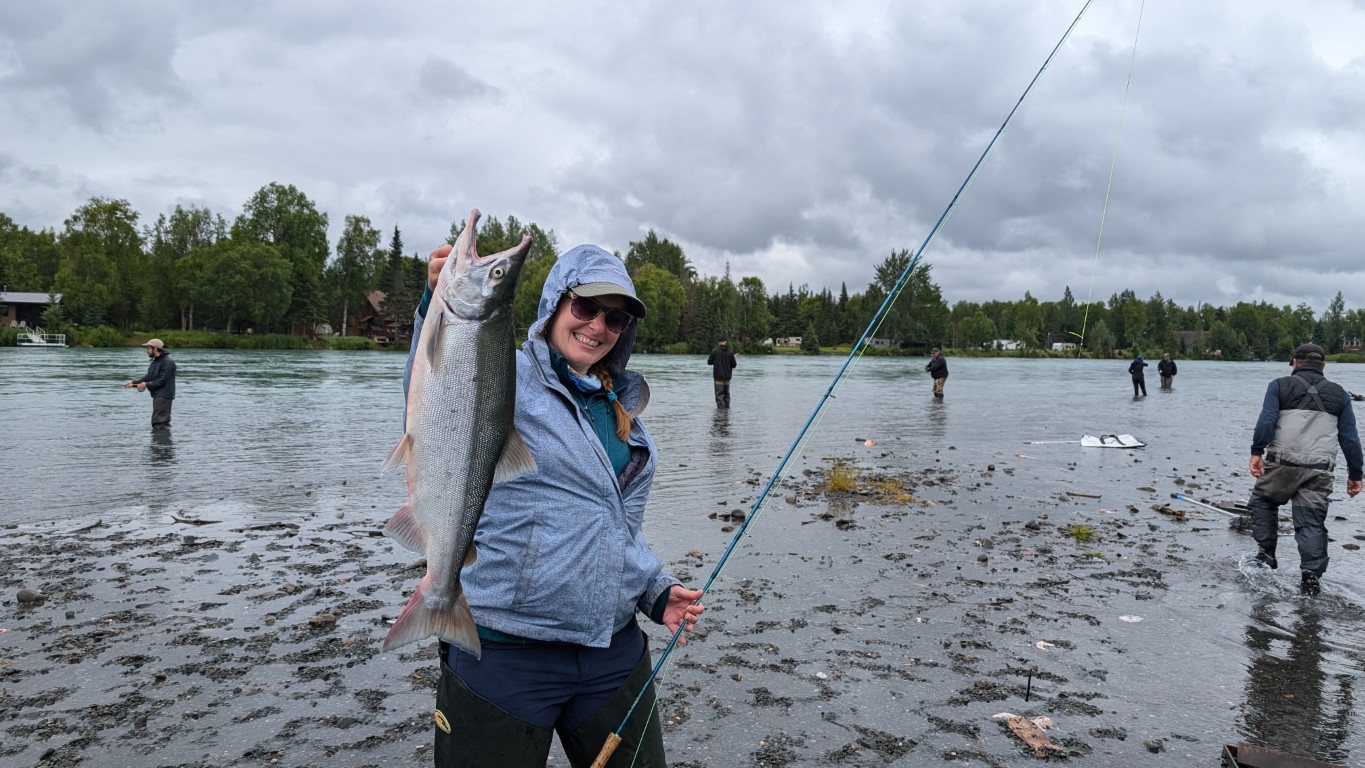
![Targeting Lake Superior Migratory Trout [Video]](/images/brule-steelhead-43.jpg)
